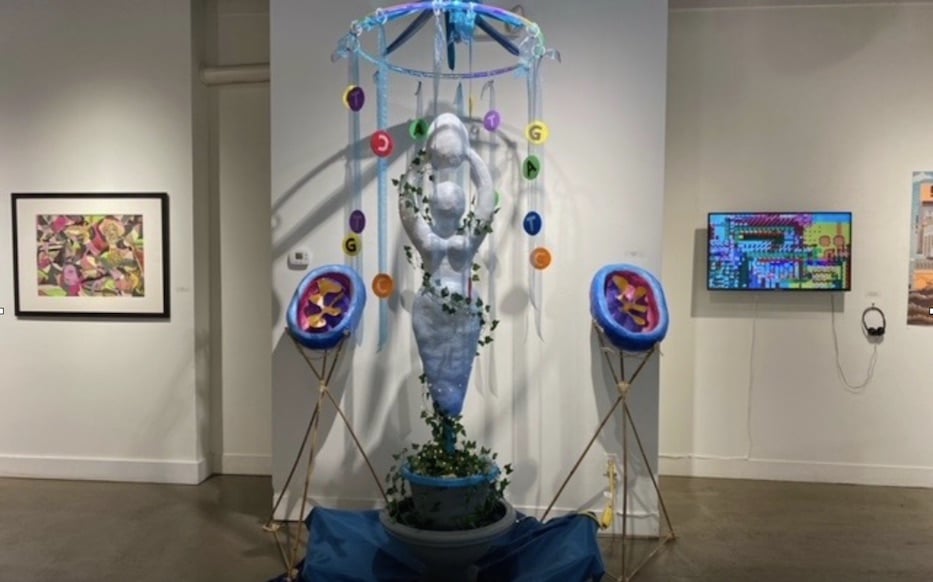
Kate Henderson's Mitochondrial Eve. Olivia Gross Photos.
A robust female form holds an egg above her head. Leafy vines and small twinkling lights wrap around her from a vase stationed under her body, where water trickles through a fountain. Above the egg, a hula hoop holds shimmering streamers that display multicolored amino acid letter codes, A, C, T, G. On the figure’s left and right, tripods support matching blue ovals at ovary height that contain pinkish-purple mitochondria.
The gentle noise of the fountain emanates through the room, filling the silence. Mitochondrial Eve, by Kate Henderson, feels like a striking ode to motherhood and femininity, perpetual life and movement.
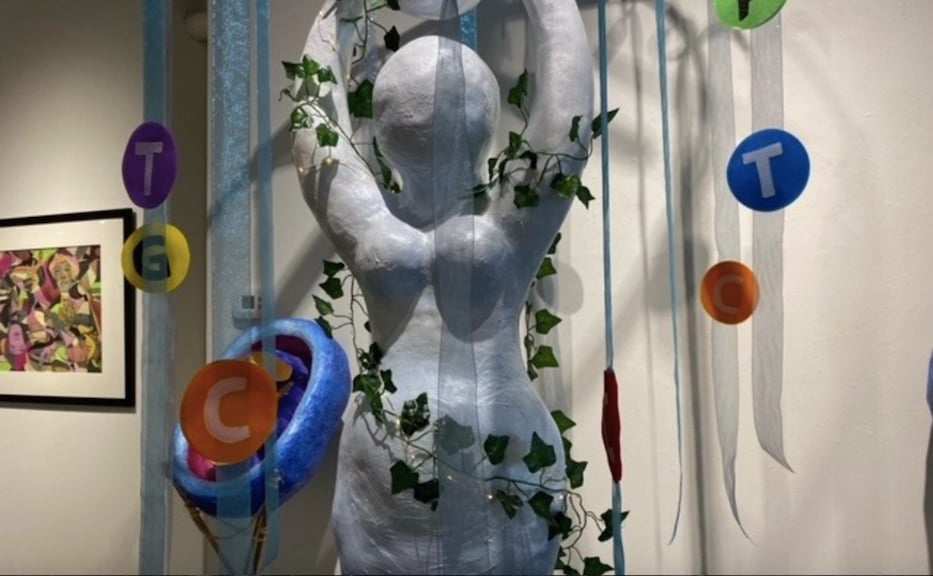
Detail, Mitochondrial Eve.
Mitochondrial Eve is one of the works in Our DNA, a juried show with work from over 50 artists at Kehler Liddell Gallery in Westville. It opened on June 24 and runs through July 25. Per the exhibition's prompt, each participating artist was tasked with exploring “the belief systems and vocabularies of our family tree that touch on our common physical or metaphorical DNA, our essential humanity, the soul of the Sapien.”
Walking through the gallery door, an oasis of imagination awaits. The space feels airy and breathable, with the dozens of art pieces that are well-spaced and welcoming. There are line drawings, photographs, paintings, collages, sculptures, mixed media, and digital works.
For many, the concept of DNA may conjure up memories of high school biology class. Double helixes and diagrams of a cell’s anatomy. Ribosomes and harshly graded quizzes. Some of the contributing artists might have taken these memories to heart when creating their artwork, but others went in political, generational, and environmental routes.
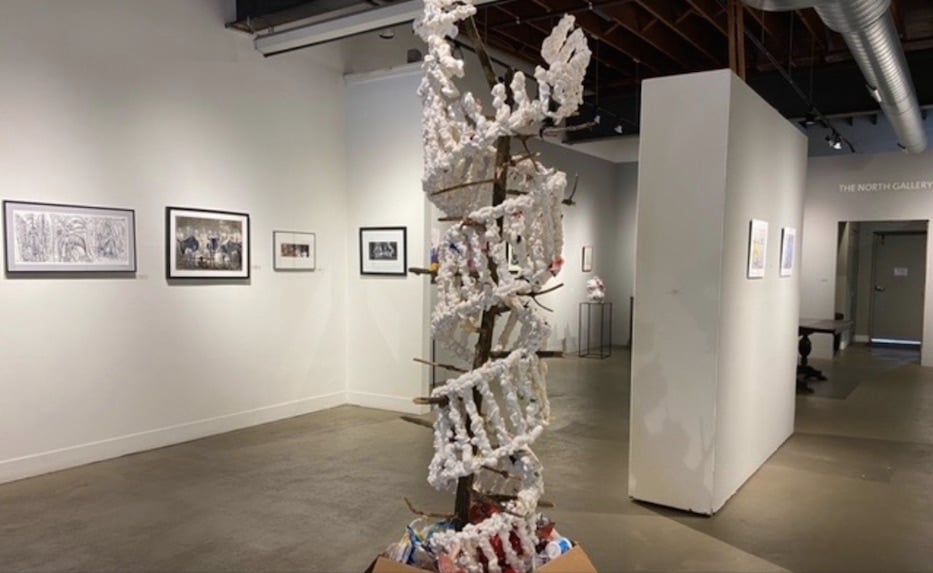
Joe Fekieta’s Death of the DNA Miracle.
Joe Fekieta’s Death of the DNA Miracle is a large sculpture placed right in the middle of the gallery that nearly touches the ceiling. A foam and wire double-helix wraps around a dead tree branch that sprouts from a stained cardboard box filled with empty junk food wrappers. Brightly-colored candy wrappers peek out of the white foam coating the double helix.
Fekieta’s epigenetic-focused commentary takes on both the human race’s self-destruction via unhealthy food habits and the destruction of our planet from the ever-growing mountains of plastic waste that comes with every bite of processed food.
A tiny wood-framed drawing takes the show’s prompt to the next level. Inside is Tom Edwards' self-portrait, a head-on view titled Self Portrait with DNA. The catch? He used his own blood and saliva to fill in his pencil drawing, fusing his actual DNA with his artwork.
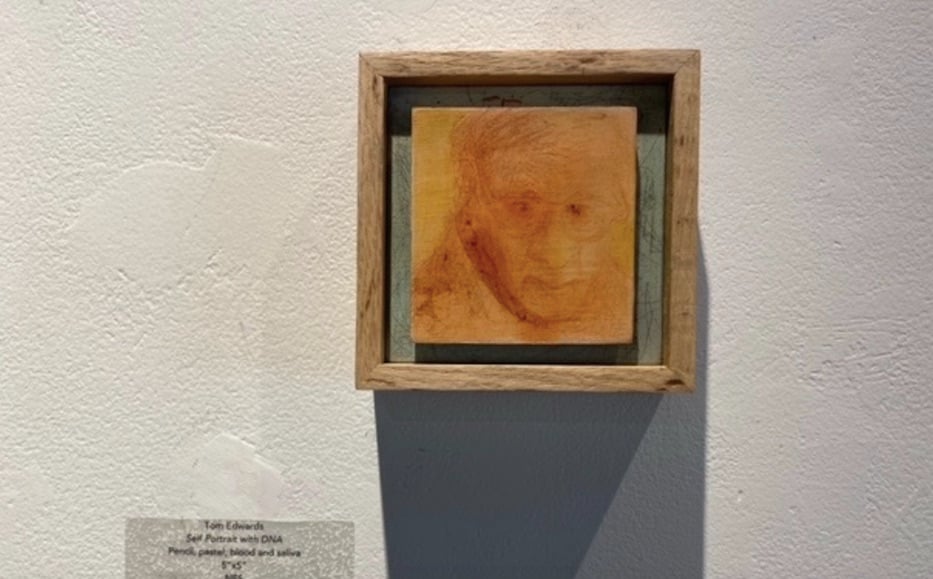
A small steel sculpture is placed in an inconspicuous corner, easy to miss. A humanoid and robotic figure holds a rifle, seemingly an extension of its own body. Both figure and gun are created from the same welded steel components. Gar Waterman titled this piece It’s in Our DNA, and the ironic use of this common phrase provides a sharp visual commentary on the issues of gun ownership, and of course, gun violence.
Lisa Toto submitted a photograph titled Never Letting Go, which depicts a mother (or motherly figure) and daughter clinging to each other with such force that sweat drips from the mother’s brow. They both gaze towards the camera, the baby curious and calm, the mother weary and strong. Viewers, thanks to the reflective gloss of the paper and glass, can also see their own reflection in the piece. Toto’s choice of depicting generational love provides a fresh take, the love that comes from DNA passed on.
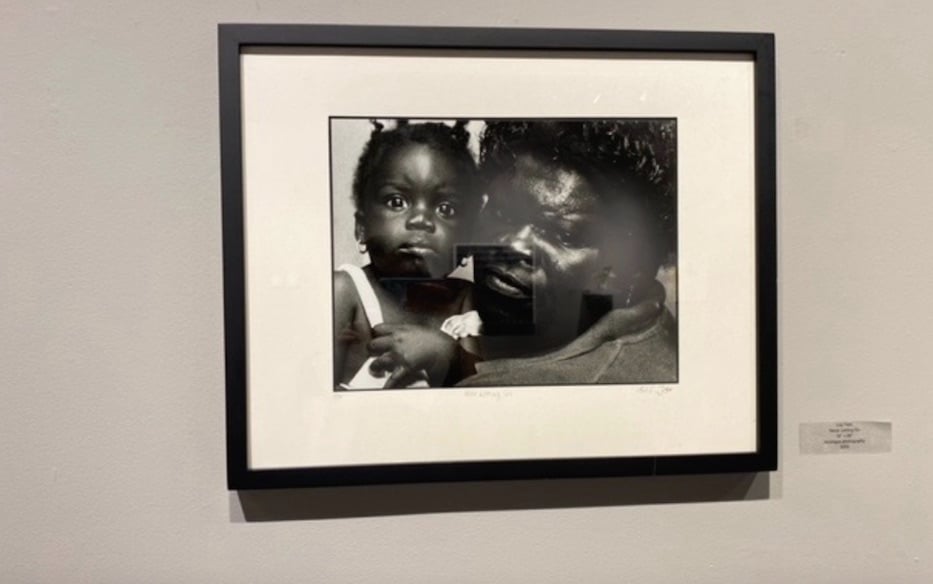
Lisa Toto's Never Letting Go.
The broad theme of Our DNA has allowed these artists to create splendid layers of meaning from the anatomical jigsaw pieces that make up every person. From gun reform to motherhood, DNA is as versatile in interpretation as the materials used to make up the pieces of this exhibition. How else can DNA help us understand the changing world?
Artist Sean Patrick Gallagher, a member of the gallery co-op board who was sitting at the front desk this past Saturday, also has a piece in the exhibit. A large line drawing of The First People, Adam and Eve, hangs right across from the desk.
“The range is really striking,” he said. “We all have preconceived ideas of what ‘Our DNA’ means but it is pretty expansive. So I’d say surprise is my takeaway of the various interpretations of this theme, both in concept and medium.”
Kehler Liddell Gallery is open Thursday and Friday from 11 a.m. to 4 p.m. and Saturday and Sunday from 10 a.m. to 4 p.m. Find out more at their website.